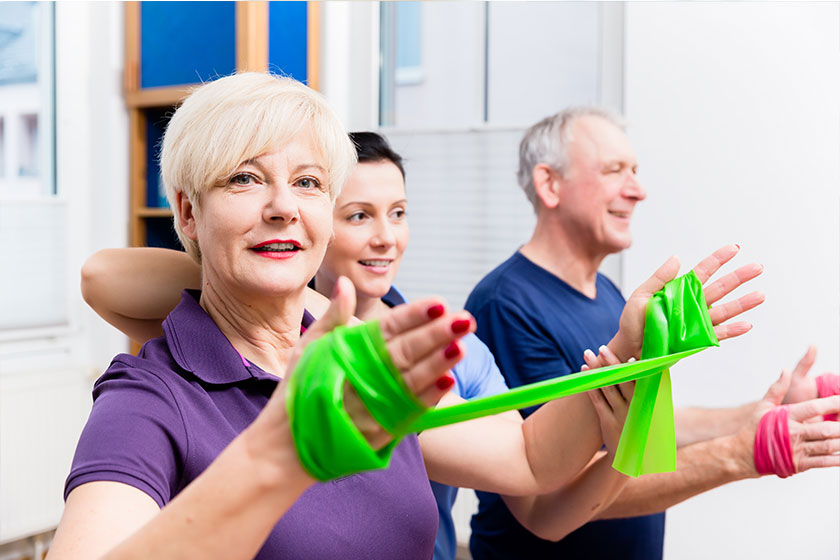As we age, maintaining our independence and quality of life becomes increasingly important. One key aspect of this is the ability to age in place, which means living comfortably and safely in our own homes for as long as possible. To achieve this, it’s crucial to focus on physical fitness and mobility. In this article, we will explore the best exercises for aging in place. These exercises are designed to help you stay strong, flexible, and independent as you grow older.
The Importance of Aging in Place
Aging in place has become a popular concept among older adults who want to maintain their autonomy and avoid moving to assisted living facilities or nursing homes. It allows individuals to stay in the familiar surroundings of their own homes, close to their communities, friends, and family. However, to age in place successfully, it’s essential to address physical health and mobility.
Regular exercise is a fundamental component of aging in place. It not only helps maintain physical strength but also enhances mental well-being, reduces the risk of chronic diseases, and improves overall quality of life. Let’s delve into some of the best exercises that can help you achieve this goal.
Strength Training
Strength training is a cornerstone of healthy aging. As we age, our muscle mass tends to decrease, leading to a loss of strength and functional abilities. Strength training exercises, such as lifting weights or using resistance bands, can help combat this decline. These exercises stimulate muscle growth, increase bone density, and improve balance, reducing the risk of falls.
To get started with strength training, consider consulting a fitness professional who can create a customized program tailored to your abilities and needs. Strength training should be done 2-3 times a week, focusing on different muscle groups each session.
Balance and Stability Exercises
Maintaining balance and stability is crucial for preventing falls, which can have severe consequences for older adults. Incorporating balance exercises into your routine can significantly reduce this risk. Simple exercises like standing on one foot or walking heel-to-toe can improve your balance over time.
Yoga and tai chi are also excellent choices for enhancing balance and flexibility. These practices not only help you physically but also promote relaxation and reduce stress, benefiting your mental health.
Cardiovascular Exercises
Cardiovascular health is vital at any age, and it becomes even more critical as we grow older. Engaging in regular cardiovascular exercises, such as walking, swimming, or cycling, can help maintain a healthy heart and lungs. These exercises also boost endurance and overall energy levels, allowing you to stay active in your daily life.
Aim for at least 150 minutes of moderate-intensity aerobic exercise per week, as recommended by health experts. Break it down into shorter sessions if needed, and remember that any amount of physical activity is better than none.
Flexibility and Stretching
Maintaining flexibility is essential for everyday tasks and activities. Stretching exercises can improve your range of motion and reduce the risk of muscle strains and joint pain. Incorporate daily stretching routines into your life, focusing on major muscle groups like your legs, arms, neck, and back.
Consider activities like Pilates, which combines strength, flexibility, and balance training. Pilates exercises can be adapted to your fitness level, making them suitable for people of all ages.
Safety Tips for Exercising as You Age
As you prioritize the numerous benefits of exercise, particularly as you age, safety should remain at the forefront of your fitness journey. To ensure your well-being: Consulting a healthcare professional before embarking on a new exercise program is crucial, as they can assess its safety in relation to your specific health conditions. Hydration is equally vital, especially during cardiovascular exercises; therefore, make it a habit to drink plenty of water to stay adequately hydrated.
Additionally, listen attentively to your body throughout your workouts, promptly addressing any discomfort or pain by adjusting your routine as needed. Employing the right equipment, such as supportive shoes and exercise mats, is essential to minimize the risk of accidents during your fitness endeavors.
When unsure about the correct execution of particular exercises, seeking guidance from a qualified fitness trainer or physical therapist is a wise choice. Lastly, maintain consistency in your exercise routine, as it is the key to reaping the full benefits of physical activity, striving for regular workouts to enhance your well-being.
Embrace an Active Lifestyle for Healthy Living
Aging in place is a goal that many older adults aspire to achieve. By incorporating a variety of exercises into your daily routine, you can maintain your physical and mental well-being, reduce the risk of injury, and enjoy a fulfilling and independent life in the comfort of your own home. Remember that it’s never too late to start exercising, and the benefits of staying active are well worth the effort. So, lace up your sneakers, grab your resistance bands, and start your journey to a healthier and more independent aging journey through exercises for aging in place.







